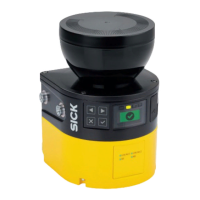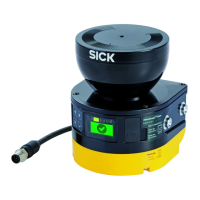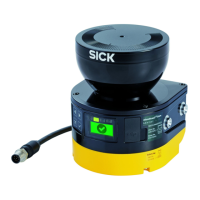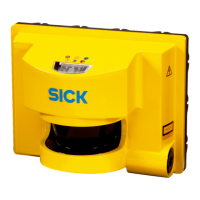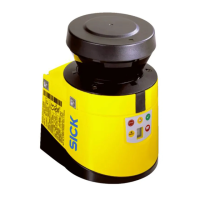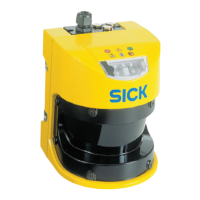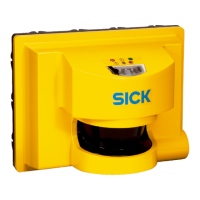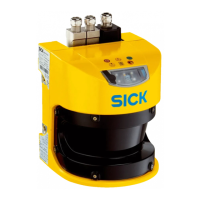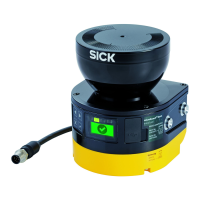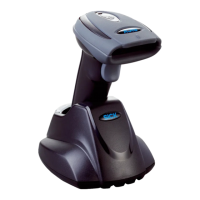NFC Near field communication. International transmission standard for
t
he contactless exchange of data by electromagnetic induction.
OFF state The OFF state is the status of the outputs of the protective device,
where the controlled machine is triggered to quit its dangerous
state and the start-up of the machine is prevented (e.g., the volt‐
age at the OSSDs is LOW, so that the machine is switched off and
remains still).
ON state The ON state is the status of the outputs of the ESPE, where the
cont
rolled machine is permitted to operate (e.g., the voltage at the
OSSDs is HIGH so that the machine can run).
OSSD Output signal switching device: signal output for the protective
device, which is used for stopping the dangerous movement.
An OSSD is a safety switching output. The functionality of each
OSSD is tested periodically. OSSDs are always connected in pairs
and must undergo dual-channel analysis for safety reasons. An
OSSD pair is formed from 2 OSSDs that are connected and ana‐
lyzed together.
PFHD Probability of dangerous failure per hour
PL Performance level (ISO 13849)
Protective field The protective field protects the hazardous area of a machine or
v
ehicle. As soon as the electro-sensitive protective device detects
an object in the protective field, it switches the associated safety
outputs to the OFF state. This signal can be passed to controllers
resulting in the dangerous state coming to an end, e.g. to stop the
machine or the vehicle.
A horizontal or vertical protective field is required, depending on
the application. The electro-sensitive protective device can there‐
fore be mounted in horizontal or vertical alignment, depending on
the requirements.
Reset When a protective device has sent a stop command, the stopped
s
tate must be maintained until a reset device is activated and the
machine can be restarted in a second step.
The reset brings the protective device back to the monitoring state
after it has sent a stop command. The reset also quits the start-up
or restart interlock of a protective device, so that the machine can
be restarted in a second step.
The reset must only be possible, when all safety functions and
protective devices are functional.
The reset of the protective device must not introduce any move‐
ment or dangerous situations itself. The machine is only permitted
to start after the reset once a separate start command has been
sent.
•
Manual resets are performed using a separate, manually oper‐
ated device, such as a reset pushbutton.
•
Automatic resets by the protective device are only permitted in
special cases, if one of the following conditions is met:
°
It must not be possible for people to be in the hazardous
area without triggering the protective device.
°
It must be ensured that no people are in the hazardous
area during or after the reset.
Resolution The resolution of an active opto-electronic protective device (also
k
nown as the sensor detection capability) is the minimum size of
an object for it to be reliably detected.
16 GLOSSARY
84
O P E R A T I N G I N S T R U C T I O N S | scanGrid2 I/O 8025936/2021-01-08 | SICK
Subject to change without notice
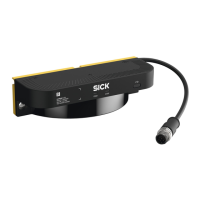
